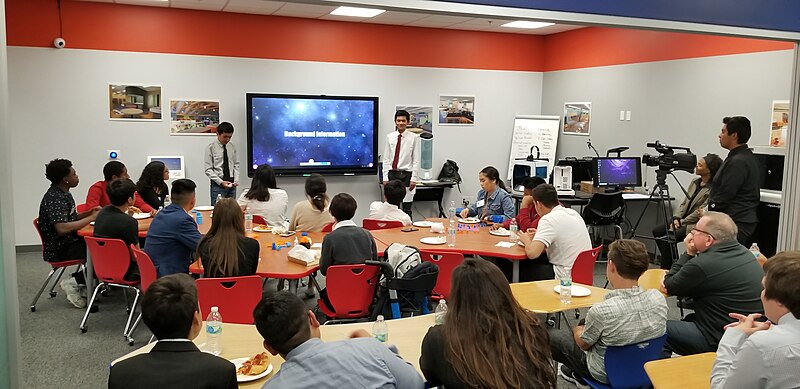Online CPR Certification Blog
Unlocking the Potential of the 21st Century Classroom: Innovative Teaching Styles for Modern Education
Date: March 12th, 2024
Technology, communication have made great strides and our perception of learning has advanced tremendously in the 21st century. Consequently, it has significantly transformed the traditional classroom setup to meet the current demands resulting into the modern day “21st century classroom”.
This article examines the components of the twenty first century teaching style, its features as well as how it prepares the modern student for success in the ever.
Technology Integration
One of the traits that characterize the twenty-first century classroom is blending technology without any barriers. Modern classroom utilizes interactive whiteboard, tablets, laptops, and high speed internet connection unlike traditional classrooms which used chalkboard and text books.
These tools bring into the world of endless educational opportunities by giving students’ option to use the internet to get information, participate in projects, and interact with learning materials in a way never imagined before.
Technology helps the teachers design exciting lessons. They could use multimedia such as clips, interactive animations, as well as virtual reality to help understand complicated matters. On the same note, online sources and educational software provide for individual instruction based on each student’s pace and style of learning.
Student-Centered Learning
The 21st century classroom is student-centered. Normally, traditional teaching involved passivity through the mode of instruction by the teacher where the student acted like a listener who took down lecture notes. Unlike, the modern education supports an active involvement as well as critical thinking.
This, in turn, encourages students to participate in the learning process. They are provided with chances to ask queries, examine subjects of importance, and conduct physical engagements. Teamwork and communication skills are enhanced by group projects, discussions, and collaborative problem-solving in the 21st-century classroom.

Image alt text: 21st century classroom
Author credit: By Mnetka – Own work, CC BY-SA 4.0, https://commons.wikimedia.org/w/index.php?curid=69428490
Critical Thinking and Problem Solving
Critical thinking and decision making are vital in today’s globalized and technological word. These skills are highly valued in the modern classroom. Lessons and activities are developed by teachers in order to challenge students to critically examine information, assess sources and develop innovative solutions to current issues.
Through debates, case studies, and other research projects; students are able to think critically, make informed decisions, and adapts to change. These skills are relevant in academics as well as for everyday living and for the future workplace.
Collaboration and Communication
Effective collaboration and communication are essential skills in the 21st century classroom and the modern workforce. Students in these classrooms work together on group projects, share ideas, and learn to communicate effectively with their peers and teachers.
Collaborative activities promote the exchange of diverse perspectives, fostering a rich learning environment. Students learn to negotiate, compromise, and work as a team, which are skills that serve them well in their future careers.
Digital Literacy
As technology becomes increasingly integrated into our lives, digital literacy is a fundamental skill. In the 21st century classroom, students not only use technology for learning but also develop digital literacy skills, including:
1. Information literacy: Students learn how to find, evaluate, and use information from various sources, distinguishing reliable sources from unreliable ones.
2. Media literacy: They learn to critically analyze media content, including news articles, advertisements, and social media, to identify bias and misinformation.
3. Cybersecurity awareness: Students are educated about online safety, protecting their personal information, and recognizing online threats.
4. Coding and programming: Many 21st century classrooms introduce students to coding and programming languages, preparing them for careers in technology.
Global Awareness and Cultural Competence
In today’s interconnected world, it’s essential for students to develop global awareness and cultural competence. The 21st century classroom often includes lessons and activities that expose students to different cultures, perspectives, and global issues. This helps them develop empathy, tolerance, and a broader understanding of the world around them.
Through virtual exchanges, international collaborations, and the use of online resources, students can connect with peers from different parts of the globe. These experiences promote cultural awareness and prepare students to be responsible global citizens.
Flexible Learning Environments
In many traditional classrooms, students would sit in straight rows with their backs directed to the front, as the teacher stood at the chalkboard. The modern-day classroom in comparison has flexible learning environments. The furniture should be moveable and it should adapt itself according to small groups or as an individual study station.
Various learning styles are facilitated by flexible spaces, which can be used for discussions, individual quiet reflection, or group work. Such flexibility makes engagement better and the learner has a feeling of being an owner of his/her learning.
Conclusion
The 21st century classroom marks a transformative stage in education, incorporating technology, student-focused learning, critical thinking, and international perspective. With this inclusion, educators hope to equip students with skills to face the dynamics of today’s society.
With this dynamic education system, learners are no longer a recipient of data but active members in the learning process. These skills make them important in academics and beyond their careers.
In the midst of developing in the digital era, it is certain that the 21st century classroom will change more in order to suit the changing students and society. Adoption of these new ways of teaching is the surest way of preparing the forthcoming generation with all the required knowledge for the present century world where all things are interdependent.